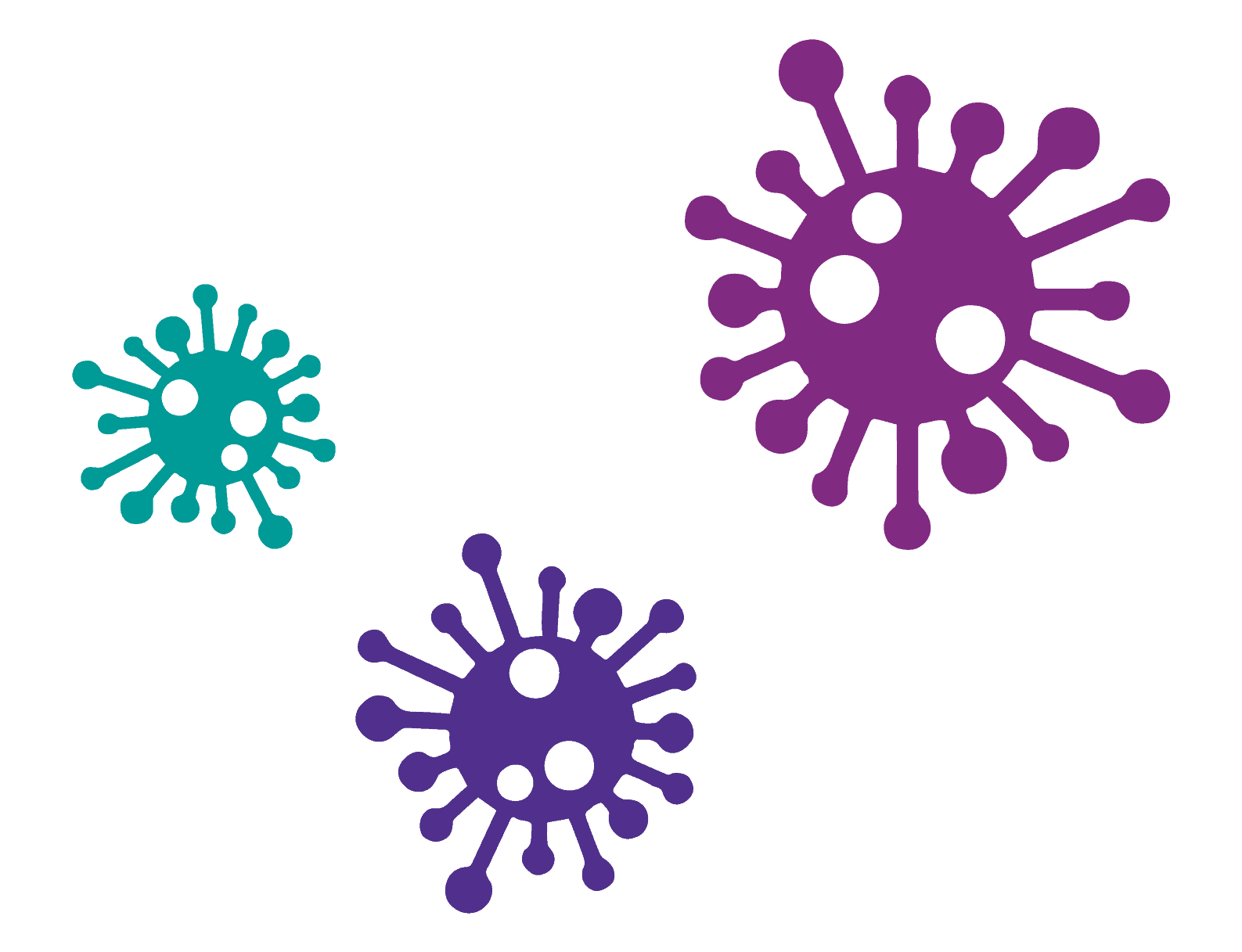On July 14, 2023, MosaicEDGE hosted the Dealing with the Health Menaces of the 21st Century: Mold & Mycotoxins live-streamed online. The following Q+A is a grouping of responses from the workshop presentations.
The material contained within this article is not intended to replace the services and/or medical advice of a licensed healthcare practitioner, nor is it meant to encourage diagnosis and treatment of disease. It is for educational purposes only. Any application of suggestions set forth in the following portions of this article is at the reader’s discretion and sole risk. Implementation or experimentation with any supplements, herbs, dietary changes, medications, and/or lifestyle changes, etc., is done so at your sole risk and responsibility.
Mark Su, MD & Max McCord, IEP
Q: Is there a way to break down the extended mold test (FAB3 Mold Score Report) into the ERMI?
A: This requires a little more background information to properly answer (short answer no as this is not helpful).
The FAB3 Mold Score Report is provided by EnviroBiomics and the ERMI test is offered (and licensed) by several labs, all providing the generic ERMI score. This test provides more species and can be helpful for clinicians who are looking to isolate certain species that may be present in the patient/client.
It is not the ERMI score clinicians and IEPs should be concerned about as the scores are not designed for investigation purposes and the score will vary greatly if the home is in ND, AZ, FL or CA (making it unreliable).
The species found in the ERMI (or also called MSqPCR test) are the indicators of the environmental health in the property and it is critical a MS-IEP (Medically Sound – Indoor Environmental Professional) can assist with the results (either virtually or in person).
It is however possible to create a HERTSMI score from the FAB3 (or any generic ERMI test as many labs do). This is a better indicator using 5 species from FAB3 (or ERMI) and is more useful as a basic score for clinicians and IEP’s.
HERTSMI-2 is an acronym for Health Effects Roster of Type-Specific Formers of Mycotoxins and Inflammagens.
Here is an online calculator, from a lab that does not provide the HERTSMI score with ERMI test.
Q: Does ISEAI include therapeutic support to the public? This experience seems to constitute a form of trauma – up to and including divorce: is there a resource we can direct clients to for psychological support when going through the life impacts of mold exposure/infection??
A: Sadly, it is very challenging for clients/patients and their immediate family and friends and often create stress/trauma without proper support. Dr. Su can address this better, however, ISEIA does provide information on members who can provide several types of help, counseling and coaching.
Q: What are your thoughts on Actinomycetes and how it effects health?
A: The health impact on clients/patients has become more important, not only for CIRS (Chronic Inflammatory Response Syndrome) clients but for all our clients.
Noted health effects are issues with executive cognitive function, including recent memory, concentration, word finding, confusion, decreased assimilation, and disorientation, can have a variety of sources of disease, including inflammation, metabolic disturbances, and degenerative processes that are typically found in diseases where chronic fatigue is present (from ESMED March 31, 203)
It is a significant contaminant in WDB (Water Damage Buildings) and we include this particular type of testing in many of our investigations.
More answered questions from Mark Su, MD:
James Neuenschwander, MD
Q: What do you think about the treatment of children with Autism Spectrum Disorders with fluconazole with mosaic studies with mycotoxins for Aspergillus in 1250?
A: I typically use itraconazole. Fluconazole does not have much activity with mold. Can be a game-changer for some kids on the spectrum.
Q: What are the tests for determining reactivity in a mold patient?
A: These are the C4q, fibrinogen, CD57, IP Flow, TGF-b1 type of tests. There are also specific cytokine tests available.
Q: Do you also see mattress can be a culprit if mycotoxins are still high after remediation and detoxing?
A: Yes. The best solution to a mattress after remediation is to throw it out and get a new one. I don’t think you can salvage them.
Q: Use of Methylene Blue and or Mots-c to end CDR response?
A: Methylene blue should stop CDR. The best way to stop CDR is to eliminate the thing that is activating it.
Q: What are your thought on provoked tests for OAT and/or MycoTOX Profile? What do you recommend and in which situations?
A: I don’t do any provoking for OAT. I do use saunas and fasting for MycoTOX Profile.
Q: What do you think about fulvic acid for detox?
A: I think it is great. I use Ion Gut Health for this.
Q: How do we differentiate the difference between lab elevations due to Cell Danger Response versus other causes?
A: You have to look for the causes of CDR to see if they are present. Usually, immune activation is the best clue followed by positive mycotoxin testing.
Q: Can you speak to any advice regarding detoxification titration and handling Herxheimer reactions?
A: Most of what I know about this is how stress impacts intestinal permeability and this leads to further gut-brain dysfunction.
Q: Have you heard of using chlorine dioxide bombs in the house to kill mold spores?
A: This is an entire lecture unto itself. Support the detox pathways ahead of tim, use saunas and other detox methods. See the slide on phase I and II detox.
Q: What about sunshine/UV light for killing mold?
A: Both will kill mold, but will not eliminate the mold toxins.
Q: Has he had any experience using TUDCA as a Bile Acid Binder for the treatment of mycotoxicity? And can he speak to the therapeutic help of Autophagy (Sp?) in treatment?
A: No.
Q: Have you heard of using chlorine dioxide bombs in the house to kill mold spores?
A: This is an entire lecture unto itself. Support the detox pathways ahead of time, use saunas and other detox methods. See the slide on phase I and II detox.
Q: I was told to take the binders 2 hours after the antifungals. Is that not good?
A: You want to take binders so that they mix with the bile, so 30-60 minutes before a meal.
Q: What dose of cholestyramine is recommended for mold and how long should you be taking cholestyramine?
A: Tudca is a bile salt that binds. It is very effective. Autophagy is for cell rejuvenation and to remove intracellular toxins, not so much for mold toxicity.
Q: Does he have any recs for Fecal Transplants for humans in the United States – and has he ever had a client use an FMT in treatment for Myxotoxicity?
A: Not legal in the US. I use Taymount in London.
Q: What dose of cholestyramine is recommended for mold and how long should you be taking cholestyramine?
A: We typically use one packet 3-4 times per day until the VCS normalizes.
Q: If CD 57 is high does that indicate high mold and/or Lyme?
A: Both high and low CD57 would indicate that.
Q: Will methylene blue help a patient while they are on binders?
A: Yes, works on a completely different mechanism.
Ed Breitschwerdt, CVN & Charlotte Mao, MD
Q: Should all pets such as dogs and horses be checked for Bartonella?
A: One answer does not fit all situations. It likely makes sense to screen cats and potentially dogs that live in very close contact with immunocompromised individuals. Based upon one large seroepidemiological study that we published (nearly 16,000 dogs tested by the VBDDL, seroprevalence was low (less than 3% for each of our three test antigens), therefore based upon serology few dogs are exposed to Bartonella, certainly compared to cats and perhaps humans???? Direct detection in dogs nearly always requires the same approach that is used for human testing- enrichment blood culture ddPCR. We continue to work on approaches to improve direct detection- see Liedig recently published. Documentation of Bartonella spp. infection in horses is more complex than for dogs and horses- most are not seroreactive so antibody testing is very insensitive and in our experience, nearly all six horses tested required at least 14 to 21 days of incubation in BAPGM for us to detect Bartonella DNA (nearly all from the 21-day culture). So screening horses does not make sense unless the horse or rider is sick. As for cats, they clearly pose the greatest risk as a reservior for human zoonotic infection. In the context of One Health, I generated the attached manuscript with neuro-ophthalmologists at Emory to address what to do with the cat in an acute CSD scenario. In the chronic human disease scenario, screening becomes more complicated as a patient may have been infected months to years earlier and the current pet has nothing to do with the infection.
Q: If there are no direct symptoms but have been exposed to cats (therefore fleas) for the past 50 years at least, should I worry or be tested for some species of Bartonella?
A: If you are healthy with no concerning symptoms, I personally would not advise being tested for Bartonella. If you own any pet cats, however, I would advise flea control measures to avoid future acquisition (or reacquisition). As noted in the presentation, the baseline Bartonella IgG seropositivity rate in asymptomatic healthy persons is substantial in a variety of geographic areas (more so in European and Canadian than US studies), suggesting the possibility that a sizable subset of healthy persons may have a history of past Bartonella exposure with latent infection but no history of Bartonella disease.
Q: Could mold / tick-borne also present as “multiple sclerosis”? Sounds like my sister, especially with the constipation, neurological, rheumatological symptoms. She’s had dogs her whole life and frequently went camping in the woods.
A: In terms of tickborne illnesses potentially associated with multiple sclerosis, the leading one would be Borrelia infection, in my view (and many others). The following are some references of note in this regard:
https://www.ncbi.nlm.nih.gov/pubmed/13431986
https://www.ncbi.nlm.nih.gov/pubmed/3969220
https://www.ncbi.nlm.nih.gov/pubmed/3577478
https://www.ncbi.nlm.nih.gov/pubmed/2876151
https://www.ncbi.nlm.nih.gov/pubmed/2457637
https://www.ncbi.nlm.nih.gov/pubmed/3190090
https://uvu.contentdm.oclc.org/digital/collection/Burgdorfer/id/899/rec/1
(Speech given by Dr. Willy Burgdorfer, discoverer of the Lyme disease spirochete, Borrelia burgdorferi, given in 1998 at a Lyme Borreliosis Foundation seminar)
https://www.ncbi.nlm.nih.gov/pubmed/11334482
https://www.ncbi.nlm.nih.gov/pubmed/11787831
Q: How would you differentiate Babesia and Bartonella psych sxs?
A: Clinically, they may be difficult to differentiate as there can be overlap in psychiatric manifestations of Babesia and Bartonella infection as well as the possibility of coexisting infections. There are less known and fewer published scientific reports of psychiatric manifestations of Babesia (see citations below) compared to Bartonella infection (see citations in presentation). Psychiatric symptoms or diagnoses that have been reported in association with both Babesia and Bartonella include personality changes with uncharacteristic outbursts of extreme anxiety and irritability, violent rages, bipolar disorder and depression. As a vector-borne parasitic infection similar to malaria, Babesia’s potential neuropsychiatric and psychiatric manifestations are considered possibly akin to neuropsychiatric and psychiatric manifestations that have been described with malaria.
Greenberg, R Tick-borne infections and pediatric bipolar disorder, Neurol Psychiatry Brain Res 2016 (abstract, 13th Psychoimmunology Expert Meeting, March 3-6, 2016). http://dx.doi.org/10.1016/j.npbr.2015.12.025
Sherr, VT, Human babesiosis An unrecorded reality: Absence of formal registry undermines its detection, diagnosis and treatment, suggesting need for immediate mandatory reporting Med Hypotheses 2004. https://pubmed.ncbi.nlm.nih.gov/15325004/
Greenberg R. Infections and childhood psychiatric disorders: tick-borne illness and bipolar disorder in youth. Bipolar Disord. 2017, 3:113
Aside from diagnostic testing for Babesia and Bartonella, other clinical or laboratory clues might point to one or the other infection, e.g. cutaneous tracks in a child with PANS would point to Bartonella or hemolytic anemia to Babesia (severe hemolytic anemia occurs with Bartonella bacilliformis, the original Bartonella species discovered in Peru in 1909, but hemolytic anemia rarely occurs with Bartonella henselae or quintana. The vector of B. bacilliformis transmission is the sandfly, and transmission/acquisition has not been reported beyond South America (essentially restricted to Andean areas of Peru and Ecuador)
Q: What is the best diagnostic test and treatment for Bartonella?
A: Choice of testing depends on what kind of lab-supportive evidence is needed for diagnosis (blood vs tissue-based, evidence of current active infection vs past infection). One must keep in mind that a stealth organism like Bartonella can sometimes be challenging to detect on lab testing. Also, there are many species of Bartonella (and the list only seems to grow) so currently available serologic tests might not pick up minority species. In some cases, serology can be paired with clinical history and exam (symptoms/signs and exposure history) to make a clinical diagnosis that might be supported (or not) by lab testing. IgG serology is an indirect test that indicates past exposure/infection but does not mean there is a current active infection, especially with lower titers. For direct detection, which provides more definitive evidence for active infection, options include PCR and in some specialty labs, droplet digital PCR (ddPCR, which has been demonstrated to be more sensitive than regular PCR) or combined culture and ddPCR.
I offer the following vignette to advise caution in the choice of labs for Bartonella testing… I was taught during my infectious disease fellowship training that “if you really care about your Bartonella testing results, send it to the CDC, not to a commercial lab”. This was when the CDC still offered Bartonella testing and prior to the availability of specialty lab testing for Bartonella. I indeed had some cases where testing was negative at standard commercial labs but strongly positive at CDC’s lab. My subsequent personal experience is that Bartonella serologic testing at standard commercial labs still suffers from very poor sensitivity. I thus strongly advise using a specialty lab like Galaxy Diagnostics for Bartonella testing, if possible. I will address the treatment question below.
Q: What is the treatment for chronic Bartonella infection? Abx therapy, supplementation, etc.
A: There are no published systematic reviews of antibiotic therapy and no consensus guidelines specifically for Bartonella treatment other than for HIV-infected persons (Guidelines for the Prevention and Treatment of Opportunistic Infections in Adults and Adolescents with HIV. NIH, CDC, HIV Medicine Association, IDSA. Accessed 7/25/23. p.C1 – C-8, link below). Treatment recommendations vary depending on type of disease and host immune status. For example, in immunocompetent individuals, uncomplicated cat scratch disease (caused by B. henselae) typically resolves within two to six months, so antibiotics are not usually recommended. Moreover, randomized controlled trials show modest and inconsistent results.
Treatment decisions tend to be based on case reports, in vitro studies, published recommendations, and anecdotal data from experts. The most used agents are the following: macrolides (azithromycin and clarithromycin), tetracyclines, rifampin, rifabutin, trimethoprim-sulfamethoxazole, and ciprofloxacin [tho’ ciprofloxain is now generally avoided due to tendon toxicity]. Parenteral agents include aminoglycoside and third-generation cephalosporin. Dual antibiotic therapy is recommended for serious Bartonella infections (doxycycline or macrolide with rifampin or rifabutin or Bactrim). HIV-positive patients should receive a minimum of three months of treatment; otherwise, recommended duration varies. Suppressive therapy can be considered if relapses occur.
There may be some benefit to using certain approved drugs and herbal therapies that have demonstrated activity in vitro against stationary phase Bartonella (Li Feng Xiao et al, Antibiotics 2019; Zheng Ma Li et al, BMC Microbiol 2020; Ma Shi Zhang, Antibiotics 2019; Ma Leone Schweig Zhang, Infect Microb Dis 2021 – see links below). More research, including in vivo studies and clinical trials of Bartonella-focused treatment, are needed to verify these findings before treatment recommendations with these agents can be made.
https://clinicalinfo.hiv.gov/en/guidelines/hiv-clinical-guidelines-adult-and-adolescent-opportunistic-infections/whats-new
https://pubmed.ncbi.nlm.nih.gov/31035691/
https://pubmed.ncbi.nlm.nih.gov/31801196/
https://www.ncbi.nlm.nih.gov/pmc/articles/PMC7149919/
https://journals.lww.com/imd/Abstract/9000/Botanical_Medicines_with_Activity_Against.99934.aspx
Q: What is the ASLO test?
A: ASLO stands for Antistreptolysin O. Test for antibody to streptolysin O (immunogenic hemolysin of group A strep) for evidence of recent strep infection.
Q: Do these manifestations of Bartonella (anxiety, abdominal pain, elevated eosinophils) get worse without treatment or fade away? Is it possible to miss Bartonella if not caught early?
A: There is wide variation in the course of symptoms. They may fade away, wax and wane intermittently, or get worse. Similarly, associated lab abnormalities may be only transient. Yes, it is possible to “miss” Bartonella if not caught early. Presumably, most primary infection is subclinical and only a small subset present with symptoms recognized as cat scratch disease.
Q: Is there a recommended read on marijuana and mycotoxins?
A: Here are a number of articles on the topic:
https://pubmed.ncbi.nlm.nih.gov/21772847/
https://pubmed.ncbi.nlm.nih.gov/27303623/
https://pubmed.ncbi.nlm.nih.gov/31681341/
https://pubmed.ncbi.nlm.nih.gov/27853518/
https://pubmed.ncbi.nlm.nih.gov/33013414/
Q: Is there a resource that you would recommend that will fill in some of the more basic information on the testing and treatment of molds and mycotoxins for the healthcare practitioner?
A: Genius, SJ (Univ Alberta) Clinical medicine and the budding science of indoor mold exposure, Eur J Intern Med 2007 https://www.ncbi.nlm.nih.gov/pubmed/17967332
Hope, J – A review of mechanism of injury and treatment approaches for illness resulting from exposure to water-damaged buildings, mold and mycotoxins, Sci World J 2013 https://pubmed.ncbi.nlm.nih.gov/23710148/
Nathan, N Toxic, Victory Belt Publishing Inc: Las Vegas, 2018
Q: What exactly is the intersectional point of Bartonella and mycotoxicity, and where can we find resources regarding how and why each can exacerbate/flare the other?
A: The bottom line is that I can’t point you to a specific resource that sums up the possible intersectional point between Bartonella and mycotoxicity because nothing like that exists, to my knowledge, and the definitive answer isn’t known. I can only point to references and resources that explain the pathogenesis of each of these conditions individually (see citations in presentation) and surmise what might be going on that could explain how and why they seem, clinically, to exacerbate/flare one another. One possibility is that immunosuppressive or immunomodulatory effects of mycotoxins could worsen an intracellular infection, like Bartonella. Another possibility that I theorized in my presentation is that hemolytic effects of certain mold species (via so-called hemolysins) may result in the “release” of intraerythrocytic Bartonella that previously were hidden from the immune system due to the lack of MHC-1 (for antigen presentation of intracellular invaders) on non-nucleated cells such as erythrocytes.




